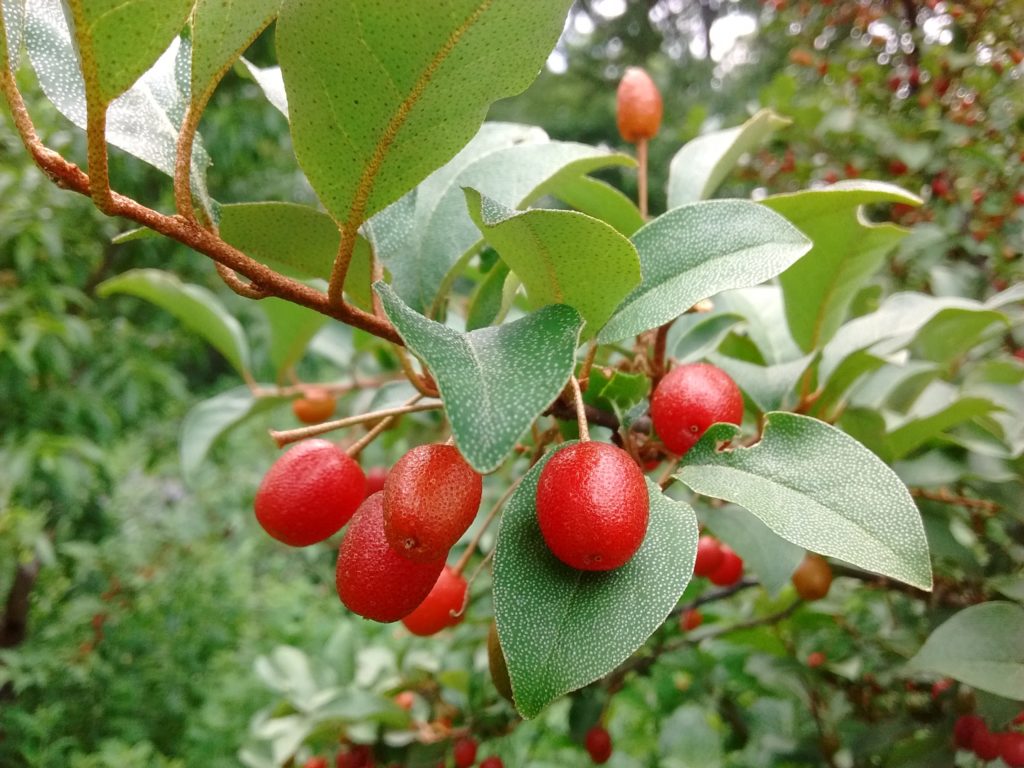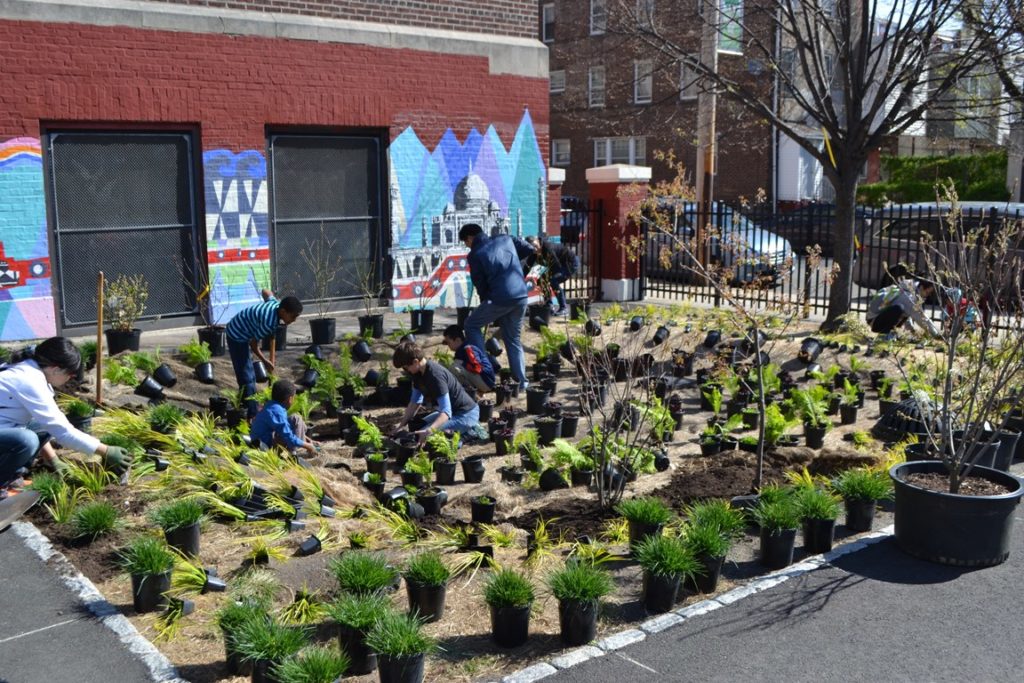Every year we ask our orchard partners to reflect on the season and to share stories with us about what the orchard provides for their community. Below are some of our favorites excerpts from 2016 celebrating the beauty, abundance, and power of orchards to serve as an engaging place of discovery and connection.
Historic Fair Hill
This year, our tiny little asian pear trees fruited. We planted them two years ago. Each pear was perfect. We must have harvested 20 lbs of pears–and those are only the ones that I was around for! Many neighbors for about two weeks were walking around, munching on pears. For two more weeks, I had people coming up to me saying, “Are there any of those pears left? They are so good!” I told them that in five years there would be more fruit growing here than we can imagine. They’d always smile like they were watching something incredible far away. I like seeing people imagine their fruit trees five years bigger.
— Staff Gardener

Awbury Arboretum
— Leslie Cerf
Overbrook School for The Blind
Our students were able to taste figs for the first time from our fig tree. They would check the tree almost daily to get the figs before the squirrels! In late November, we made fig jam with the students. To quote our student, Elijah, when he tasted the jam: “It’s the bomb dot com!”
— Roseann McLaughlin
Tulpehocken Station Orchard
One Saturday, when a few volunteers were working in our train station garden, a woman using a cane appeared among us with a hand outstretched. It turned out she is a neighbor who is a retired professional gardener and now takes the train every morning to Chestnut Hill to spend time at the library and at other favorite haunts. She remembered when the train station grounds were a dump (literally), and said she loves what we have been doing to make it beautiful. She wished she could volunteer to work with us, but her physical limitations prevented that, so instead she handed us a check for $100–a big deal for our small coffers!
— Marjorie Russell
Pentridge Children’s Garden
Every year, including this one, the neighborhood kids have their eyes on the apple trees for ripe fruit. As soon as they start sizing up, they come through the gates excited to bring some home to their families. We have to be careful that we wait until they are truly ripe, but we do let them try them as they ripen so they can compare different stages. Some kids down the block from a Laotian family bring home some under-ripe fruits for processing. The garden is therefore a symbolic and actual source of abundance and joy for the kids and families who live nearby.
— Owen Taylor

Lea Elementary
Our orchard empowers exploration. The Edible Fruit Forest rests in a school yard. Built and supported, mostly, by the community, the school attendants, from student to staff, [initially] paid it no attention. They hadn’t yet noticed that the space being developed on their grounds was for them and their use. Now, there are teachers touring, students exploring, and staff stooping under trees for lunch, noticing and acknowledging the space in simple, interactive ways.
— Kaamilah Milton
Sunday Breakfast Rescue Mission
This year, we had a lot more raspberries to harvest and share. We served the raspberries in small cups to the guests that came for meals. Most of the guests had never tried raspberries before, so they were really appreciative that we shared these fresh harvested fruits with them. It is also popular after their lunch for a healthy snack. We never felt this happy to share.
We have transformed part of the farm as a seating area. This space is important for the men in the Overcomers program to have a quiet and safe place to go and relax their minds. Visitors, volunteers and staff love to use this space to have lunch, gathering, and connect.
— Meei Ling Ng
SUPPORT US! If you found this entry useful, informative, or inspiring, please consider a donation of any size to help POP in planting and supporting community orchards in Philadelphia: phillyorchards.org/donate.